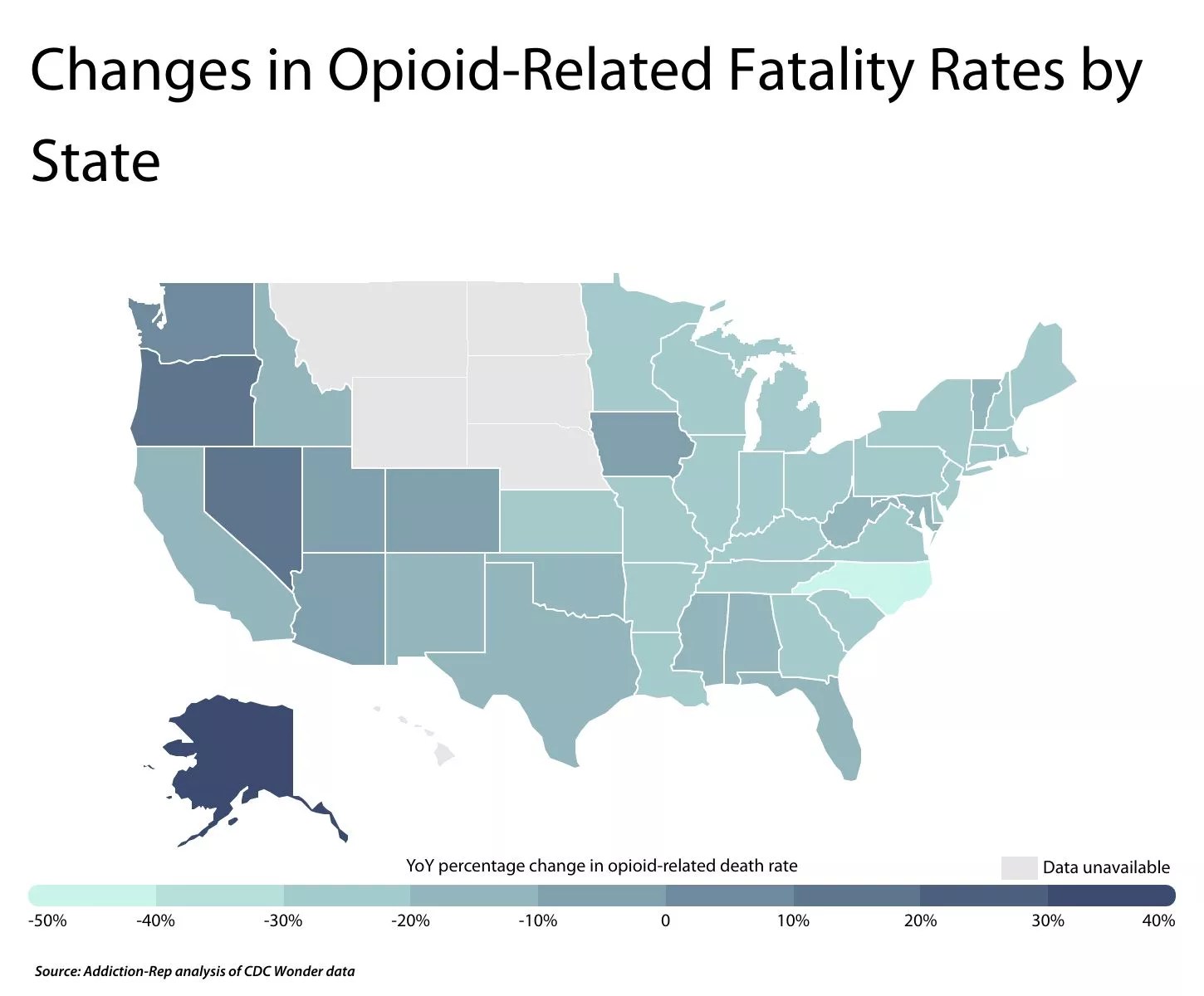
Flickr/Focal Foto

Audio By Carbonatix
A new analysis shows that Colorado opioid deaths declined in 2024, but lag behind other states where opioid deaths have significantly decreased.
In Colorado, opioid deaths declined by 8 percent from 2023 to 2024, but seventeen other states, headlined by North Carolina, saw decreases of over 24 percent in opioid deaths during the same period. Of states where opioid deaths declined in 2024, only Utah made fewer gains than Colorado.
Colorado’s modest decrease is still positive, however, especially given that four states in the western half of the United States – Alaska, Nevada, Oregon and Washington – saw increases in opioid deaths between 2023 and 2024.
Researchers from Addiction-Rep, a marketing firm for rehab centers, used data from the Centers for Disease Control and Prevention through June 2024 to reach these conclusions. They suggested the states with bigger gains were also those that originally had a higher number of deaths from opioid-related causes. The rising presence of fentanyl mixed with other drugs, like cocaine and methamphetamines, has risen in western states in recent years, according to Addiction-Rep, leading to the higher number of deaths.
Will you step up to support Westword this year?
At Westword, we’re small and scrappy — and we make the most of every dollar from our supporters. Right now, we’re $23,250 away from reaching our December 31 goal of $50,000. If you’ve ever learned something new, stayed informed, or felt more connected because of Westword, now’s the time to give back.
From June 2022 to June 2023, CDC data shows Colorado saw 22.3 opioid-related deaths per 100,000 residents. Between June 2023 and June 2024, the state saw 20.5 opioid-related deaths per 100,000 residents.
To put those numbers in simpler terms: 89 fewer people died from opioid-related causes in the twelve months between June 2023 and June 2024 than in the previous twelve months.
Colorado fits in with the national trend, as well, with opioid deaths falling in the second half of 2023 and first half of 2024 in the United States for the first time since 2018.
The U.S. Department of Health and Human Services declared the opioid epidemic a public health emergency in 2017.
“Opioid-related deaths peaked in mid-2023 at 85,387 deaths in the twelve-month period ending in July 2023,” Addiction-Rep researchers found. “Deaths have since declined to 71,484 by June 2024, marking a 16 percent drop.”
Synthetic opioids like fentanyl claimed the most lives by far in 2024, with 62,000 deaths across the country attributed to those substances. However, that was a significant drop from 2023, when over 77,000 deaths were linked to synthetic opioids.
Men were more impacted than women by opioid overdose deaths last year, representing 49,404 deaths in 2024 compared to 19,723 deaths by women.
Colorado’s highest month for opioid-related deaths was February 2022. According to the analysis, illicit fentanyl was and still is the dominant driver of fatal overdoses, and has been the primary factor in the majority of overdose deaths beginning in 2013.

Opioid overdose deaths in America, 2024
Addiction-Rep